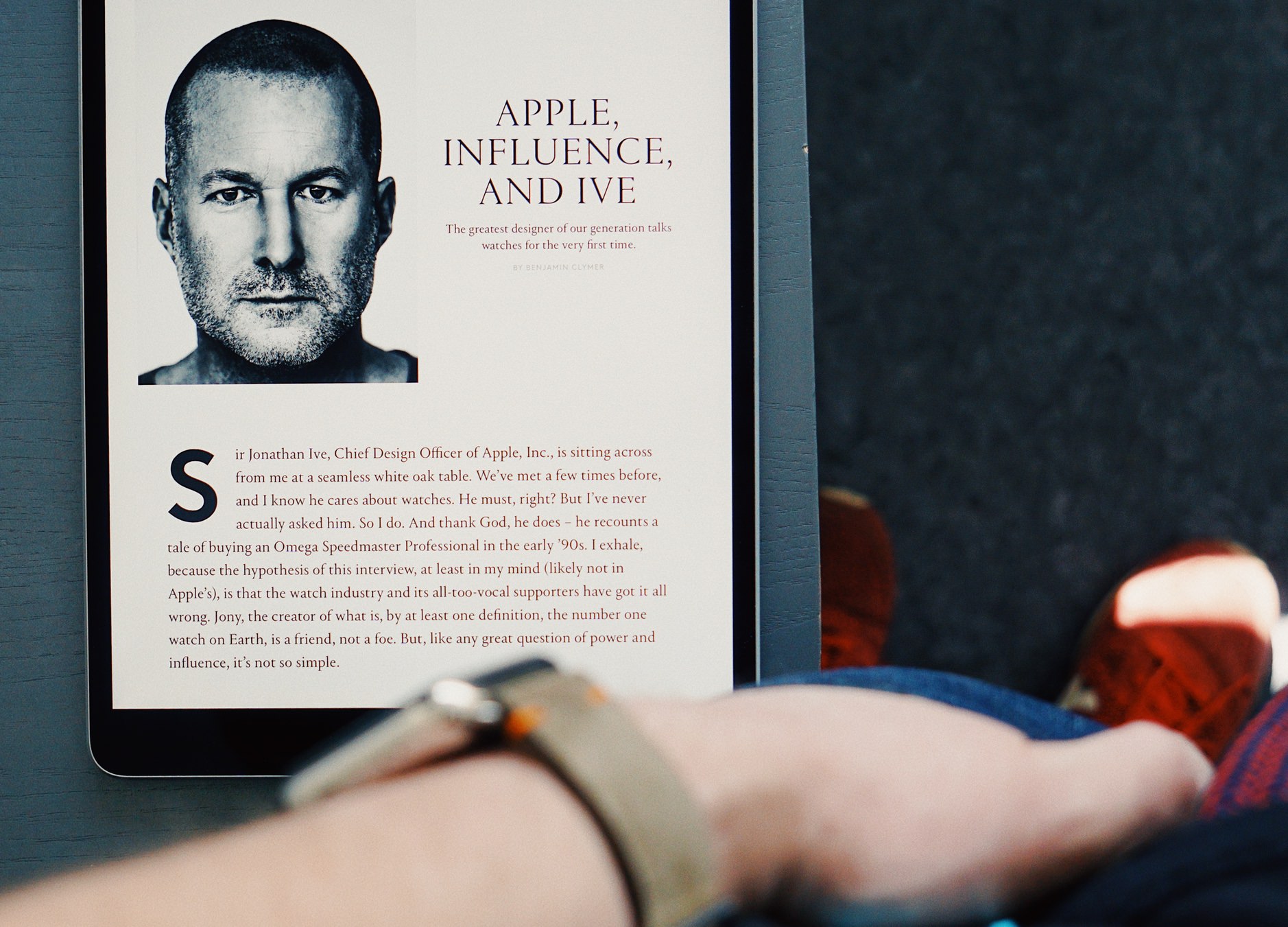Hodinkee: Apple, Influence, And Ive

Benjamin Clymer: The physical evolution – miniaturization – seems logical, but what was the question or problem you were looking to answer with the Apple Watch?
Jonathan Ive: I don’t think there was a problem specifically. It was more a matter of optimization – of opportunity. You can look at Apple Watch in terms of trade docs – what it does, etcetera – or you can look at what would be possible if you knew that you had this much technology with you at all times. Many of us have our phones with us all the time, but they aren’t connected to you. Imagine having something this powerful with you at all times, and what opportunities that might present to the user.
Benjamin Clymer: Sure, what does that mean specifically?
Jonathan Ive: That the opportunity is phenomenal. Particularly when you don’t understand just where we are today in terms of technology and capability, but where we are headed.
At this point he cracked a smile. And I began to realize that these first few generations of Apple Watch are just the beginning. It’s as if Apple has been toying with us – showing us the framework on which our future life accessories will be based, but not giving us the full story. I began to see this with the Series 3, which is markedly more powerful than its two predecessors. I began to think of where we’d be with Apple Watch in the next few years, but of course, Apple does not discuss future products.
„That’s a hell of a tease.”
Die Apple-Watch-Hardware fühlt sich seit der ersten Generation als ein Produkt an, dass nach meinem Gefühl noch nicht existieren dürfte. Im Labor – okay, aber nicht für ein paar Hundert Euro zum Kauf an der nächsten Straßenecke.
Das Level an Miniaturisierung, an Prozessorleistung und LTE-Konnektivität, die wir fast unbeeindruckt täglich am Handgelenk tragen, erinnert mich ans Zitat von Roy Amara: „We tend to overestimate the effect of a technology in the short run and underestimate the effect in the long run.”
